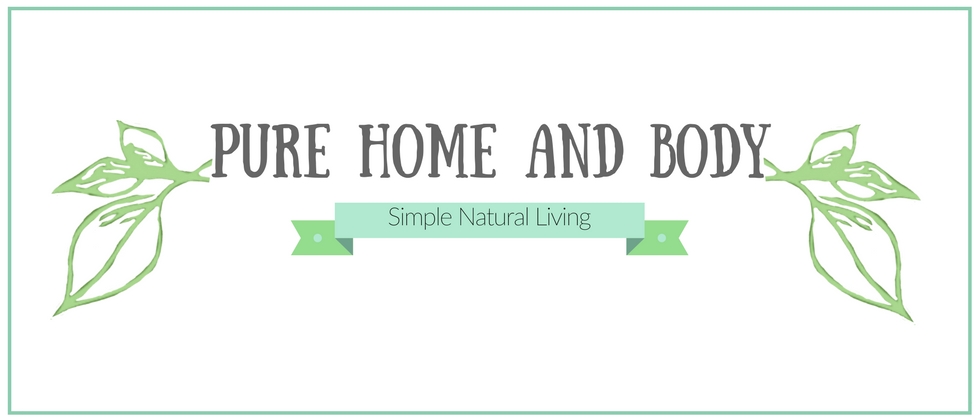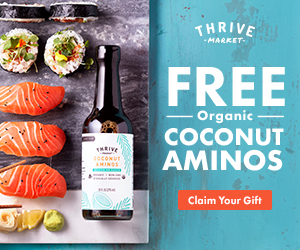Spring and summer bring back lots of memories for me, the lazy warm days staring at clouds in the sky and lying on the soft green grass.
Warm summer evenings on the pier up north or hot days at the beach are perfect opportunities to pack a snack or lunch to enjoy outdoors. Every 4th of July we pack up a cooler with tasty treats for a whole day of healthy snacking from afternoon to nightfall. We do it partly out of convenience, to avoid the crowds in local restaurants as we celebrate,and partly out of tradition. It takes a bit more planning when we are vacationing since the local stores don’t carry the selection of green goods that we have at home, so many things I’ve re-used over the years, like our cloth napkins. We add some locally grown produce and we’re good to go.
Natural living doesn’t have to be complicated, and it’s not rocket science. In fact, you’re probably already doing some of these things in your home. Just change your perspective and incorporate those same things that you can reduce, reuse & recycle in your home when you’re out for a picnic. Simple. Keep foods close to their whole form and you’ll be living out the simplest natural living plan.
Simple Choices You can still cling to natural living standards when you pack for your next outing, there are some great options out there too that not only make it fun, but convenient as well. Choosing to go green is as easy as picking up a recycled material product that is compostable instead of those styrofoam plates at the grocery store. Depending on what retailers are in your area, you might be surprised at what you find when you look for alternative goods in the natural foods aisle. Whatever you have planned for vacation, or the 4th of July, there will most likely be some simple options for switching out traditional products in your picnic basket this season. Here’s one meal I put together for a simple lunch at home under the shade of a cool tree:
1. Skip the Styrofoam – I love real materials. Glass, ceramic, bamboo all have a hand that cannot compare to any foamy counterpart. Chemical dinnerware is toxic when heated even slightly, put your whole foods on natural, pure materials. Many companies now make convenient travel containers in glass, ceramic and stainless steel including some common brands from most department stores. For this picnic, I used these cool plates made from fallen leaves from Arthware. They’re suppose to be reusable, which might be true, but not much so if you use any juicy fruit or salsas.
2. Pack whole foods Summer is the time to celebrate locally grown produce. Visit a local farmers market or grow your own and take it with you when you travel or go to that neighborhood potluck. Give your family and friends the best and pack foods made with fresh produce and flavored with real herbs and spices.
3. Use real flatware Our stores are filled with disposables and plastic. I agree it is lighter-weight, but just like styrofoam, the taste of food on plastic is less than desirable. Nothing compares to eating a real meal with real stainless steel forks and spoons. It’s a little bit more work to bring it home and wash, but it connects us with our food. Eating a meal is a ritual, a routine of life that involves preparing, eating and cleaning up the remains. It’s an activity packed with real life, not just a disp0sable one. I don’t want to live a life of consuming disposable goods, dumping them and replacing them when it’s convenient. And I don’t want my kids to grow up with this attitude either. I want my kids to grow up appreciating what we have and taking care of it. That encompasses many aspects, not just consumption without regard of where these things came from or where they are going when we are done with it. When we are done with it, we clean it, care for it and put it back in the flatware drawer.
4. Real cloth napkins, please I quit paper napkins years ago and I haven’t looked back since. It was odd at first, but now I love it. Wiping a child’s face with real cotton fabric is so nurturing, it feels like I’m loving them with each gentle wipe. Now that I’ve let go of paper napkins, I’ve not only saved money on the disposable paper, I don’t miss the scratchy rough paper that really doesn’t do a full job of cleaning up unless you use about 10 of them. If you haven’t switched to “cloth” yet, be prepared for some adjustment period, first to the sensory adjustment, but also to the disposable perspective. I used some inexpensive cotton bandanas in this picnic basket. They are affordable, colorful and large. They are big enough to wrap a sandwich or wipe up a sizable spill. They wash easiily and dry pretty quickly if they are laid out flat. There are some unusual ones at BoulderBandana that I’m hoping to invest in one day, these pretty silkscreened bandanas are printed on natural unbleached cotton. If you go for the inexpensive ones from a local source, look for ones made in the USA, not China.
5. Skip the chemical hand sanitizer I’ve always felt like I needed to wash my hands after “cleaning” them with these chemical cleaners. There are some natural hand sanitizers on the market, my favorite is an Immune Boosting Blend hand sanitizer. Of course, you can always make your own natural hand sanitizer. All you need is some aloe vera or witch hazel (not the gloppy gel sold in the drugstore by the sunscreens). I’m talking about pure aloe vera , there are a few on the market that are pure, just read the label and make sure it doesn’t have any funky preservatives, colors or thickeners. Add 10-20 drops of essential oils to your aloe vera and that’s it. Instant clean, simple.
The best antibacterial oils for everyday hand cleaning are lavender, lemon, melaleuca (tea tree) & thyme essential oils. Clove and cinnamon are highly antibacterial, but also very hot essential oils and hurt if you touch your eyes with them. If you use clove or cinnamon essential oil make sure it’s diluted with some of the more gentle antibacterials like lavender, lemon or melaleuca alternifolia. Use them separately or all together.
Just remember that lemon essential oil is a photo sensitizing oil which means it makes your skin more susceptible to sunburn so don’t rub it all over the tops of your hands if you make hand sanitizer with lemon essential oil. If you are really ambitious, go ahead and mix up your own. Clean My Space has a recipe but it has a lot of rubbing alcohol in it. No Ordinary Homestead has a few recipes, I like the one using witch hazel plus aloe vera. I would avoid using a vodka version on anyone under 21 :).
6. Leave the DEET behind Chemical bug sprays and lotions are a hazard to kids and animals, not to mention the tasty foods you’ve packed for you picnic or cookout. Make your own bug spray with pure, organic, therapeutic, food grade essential oils. I know that is a mouthful, but every word is important. Please don’t use fragranced oils or those from the cooking industry, these are not the same oils used for therapeutic purposes in clinical aromatherapy. True therapeutic essential oils are made from
- Proper plants (the proper species),
- Organically grown plants (pesticides & fungicides sprayed on plants will become highly concentrated in an essential oil)
- Pure plant material (the proper part of the plant must be distilled to get a therapeutic grade oil, with nothing added or taken away)
- Properly distilled plant material (just like cooking the plant material must be distilled at specific temperatures to preserve the volatile components in the oil)
Once you have your pure essential oils, make up your own blend. The best bug-busting essential oils include:
- Lemongrass
- Eucalyptus citriodora
- Citronella (not edible)
- Peppermint
- Lavender
- Melaleuca alternifolia (tea tree)
- Palo Santo
- Neem oil
For your own DIY Insect Repellent : Add 10-20 drops of your chosen essential oils to 4 ounces of aloe vera, apple cider vinegar (ACV) or witch hazel. Spray exposed skin and repeat as necessary. Avoid contact with eyes. For a more lasting repellent, add the essential oils to 2 T vegetable oil like coconut or olive oil keeping in mind this will produce a greasier product than the aloe vera, ACV & witch hazel.
What ideas do you have for packing a natural, more organic meal outdoors?














Great blog! We do our best to eat whole foods when we head out for picnics and travel. Sliced fruits and veggies are extremely portable and one of our main go to foods, along with bringing in our drinks in big Nathan bottles.
Thanks for linking to my hand sanitizer post!
Thanks for stopping by Tiffany! I’m glad I could pass on your excellent recipe for hand sanitizer. Hope you have a wonderful summer with many picnics and safe & healthy travels :). ~
This post is perfect timing for the picnic I am planning with my mom and sister for my mom’s birthday (we are taking her on a wine tasting tour and then picnicking at one of the wineries). I love the idea of using real silverware and reusable food storage. We are thinking of doing a mason jar picnic or bringing our glass plate along. Something about have a “green” picnic (with cloth napkins and nice cups etc) even seems to elevate the affair to something more fancy and celebratory. Love!
https://enchantmentlearning.squarespace.com
Yes Maria, glass mason jars in the picnic basket would be a fun addition to make this portable. Hope you have a beautiful day celebrating her birthday!
Cheers, Susan